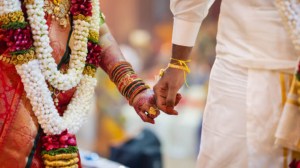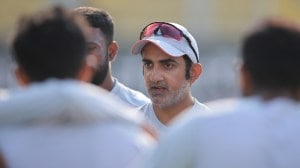
Central interlocutor on tribal affairs soon: TIPRA leader after meeting Shah
Syllabus:
Preliminary Examination: Current events of national and international importance.
Mains Examination: General Studies II: Functions and responsibilities of the Union and the States, issues and challenges pertaining to the federal structure, devolution of powers and finances up to local levels and challenges therein.
Key Points to Ponder:
• What’s the ongoing story- TIPRA Motha chief Pradyot Debbarma on Wednesday said Union Home Minister Amit Shah had started the process for a “constitutional solution for the indigenous people of Tripura” and said the Centre would appoint an interlocutor for the process. Debbarma thanked Shah for “understanding the genuine problems” of tribals in the state.
• What will be the role of interlocutor?
• Previous Interlocutors and why?
• What is Tipraland?
• For Your Information-The parties are demanding a separate state of ‘Greater Tipraland’ for the indigenous communities of the north-eastern state. They want the Centre to carve out the separate state under Article 2 and 3 of the Constitution. Among the 19 notified Scheduled Tribes in Tripura, Tripuris (aka Tipra and Tiprasas) are the largest. According to the 2011 census, there are at least 5.92 lakh Tripuris in the state, followed by Reangs (1.88 lakh) and Jamatias (83,000).
• Why is the demand for a separate state, Greater Tipraland, for indigenous communities in the region making headlines these days?
• Map Work-Mark Proposed Tipraland state on map
• Who all is demanding a Greater Tipraland?
• Several tribal outfits in Tripura have joined hands to push their demand for a separate state for indigenous communities in the region, arguing that their “survival and existence” was at stake- What is their main demand?
• What does the Constitution say?
• What is Article 2 and Article 3 of the Indian Constitution?
• How did the demand originate?
Story continues below this ad
• What has been done to address the grievances of indigenous communities?
• What was the immediate trigger for the demand?
Other Important Articles Covering the same topic:
📍Explained: What is ‘Greater Tipraland’ and why are tribal outfits in Tripura pushing for it
Dhankhar staff attached to 20 House panels, Opp hits out
Syllabus:
Preliminary Examination: Indian Polity and Governance-Constitution, Political System, Panchayati Raj, Public Policy, Rights Issues, etc.
Mains Examination: General Studies II: Parliament and State legislatures—structure, functioning, conduct of business, powers & privileges and issues arising out of these.
Key Points to Ponder:
Story continues below this ad
• What’s the ongoing story- Eight officers from the personal staff of Vice President and Rajya Sabha Chairman Jagdeep Dhankhar have been “attached” to 12 standing committees and eight department-related standing committees of Parliament, drawing criticism from the Opposition. The officers attached to the committees from the Vice President’s staff are Officer on Special Duty (OSD) Rajesh N Naik, Private Secretary (PS) Sujeet Kumar, Additional Private Secretary Sanjay Verma and OSD Abhyuday Singh Shekhawat. The appointees from the Rajya Sabha Chairman’s office are his OSDs Akhil Choudhary, Dinesh D, Kaustubh Sudhakar Bhalekar and P S Aditi Chaudhary.
• Why the order drew strong criticism from the Opposition?
• What are Committees of Parliament, and what do they do?
• Does the Constitution makes a mention of these committees, their composition, tenure, functions, etc?
• Parliamentary committees are of two kinds, Standing Committees and Ad Hoc Committees-How they different from each other?
Story continues below this ad
• Do You Know-There are in total 24 standing committees, each made up of 21 Lok Sabha MPs and 10 Rajya Sabha MPs. Out of the 24, 16 work under the jurisdiction of the Lok Sabha Speaker, and eight come under the purview of the Rajya Sabha chairman. Most bills, after their introduction in the House, are referred to these committees for detailed examination. The speaker and the chairman are authorised to do so based on demands by the MPs. The committees carry out the scrutiny work in consultation with domain experts. Written representations are also invited from people at large. The ministers and government officials concerned are also asked to make submissions before the committees.
• What are the various Committees of Parliament?
• How do discussions/ debates in the Parliamentary Committees differ from those in Parliament?
• How are the Committees constituted, and how are their chairpersons chosen?
• How important are the recommendations of the Committees?
Other Important Articles Covering the same topic:
📍House panels, their leaders, and role in law-making
Gp Capt Shaliza Dhami first IAF woman officer to head frontline unit
Syllabus:
Story continues below this ad
Preliminary Examination: Indian Polity and Governance-Constitution, Political System, Panchayati Raj, Public Policy, Rights Issues, etc.
Mains Examination: General Studies I: Role of women and Social empowerment
Key Points to Ponder:
• What’s the ongoing story-The Indian Air Force announced Tuesday that it has selected Group Captain Shaliza Dhami to take command of a frontline combat unit in the Western sector. Group Captain Dhami will be the first woman officer in the IAF to command a missile squadron in the Western sector facing Pakistan. She is currently posted in the operations branch of a frontline command headquarters.
• Why is this significant?
• Quick Recall-The Supreme Court recently directed the Centre and the Indian Air Force to consider granting Permanent Commission to 32 retired women Short Service Commission (SSC) officers based on their suitability with the purpose of giving them pensionary benefits. The military opened its doors to women in 1992 when the Air Force inducted its first batch. It’s been three decades, and that women are still at the mercy of the courts is something to reflect upon.
Story continues below this ad
• What was the Supreme Court’s Verdict in Ministry of Defence vs Babita Puniya and others in February 2020?
• Women in armed forces and their right to equality of opportunities-connect the dots
• How Principle of non-discrimination on the ground of sex under Article 15 and Right to equality of opportunity for all citizens in matters of public employment under Article 16 is applicable in the armed forces?
• For Your Information-The Indian Air Force started inducting women fighter pilots in 2016 – the first batch had three women fighter pilots. They currently fly the MiG-21, Su-30MKI and Rafale. The development comes weeks after the Army cleared as many as 108 women officers for the rank of Colonel (selection grade), making them eligible for command roles. Women officers have started taking command of various Army units in arms and services including Engineers, Signals, Army Air Defence, Intelligence Corps, Army Service Corps, Army Ordnance Corps and Electronics and Mechanical Engineers. The Navy has also started inducting women officers on frontline ships, earlier a no-go zone for women officers. Many of them have been posted in the sensitive northern and eastern commands of the Army.
• What exactly does frontline unit mean?
Story continues below this ad
• What is the present scenario for the women entry in the Indian armed forces?
• Do You Know-There are 10,493 women officers serving in the armed forces, the majority in the medical services. The Indian Army, being the largest of the three services, has the largest number of women officers at 1,705, followed by 1,640 women officers in the Indian Air Force, and 559 in the Indian Navy – this data was provided by the government to Parliament last year.
Other Important Articles Covering the same topic:
📍Victories Still To Come
Govt plans to ease norms for cross-border flow of data
Syllabus:
Preliminary Examination: Current events of national and international importance
Main Examination: General Studies II: Government policies and interventions for development in various sectors and issues arising out of their design and implementation.
Key Points to Ponder:
Story continues below this ad
• What’s the ongoing story-IN a move that could further liberalise conditions for data transfer, the proposed new law could allow global data flows by default to all jurisdictions other than a specified negative list of countries where such transfers would be restricted, The Indian Express has learnt.
• Why does data matter?
• What is Data Protection?
• What is personal data?
• What is non-personal data?
• Personal data and Non-personal data-compare
• In August, the government withdrew the earlier Personal Data Protection Bill from Parliament. Why did the Government withdrawn the Personal Data Protection Bill?
• Joint Committee of Parliament Report on the Personal Data Protection Bill-Know key highlights
• Supreme Court on Right to Privacy (Justice K.S. Puttaswamy vs. Union of India, 2017)-know the verdict
• Justice B N Srikrishna committee recommendation on Data Protection-Know key recommendations
• Personal Data Protection Bill 2019- how this Bill propose to regulate data transfer?
• Key features of Personal Data Protection Bill 2019-know in brief
• What is data localisation? Know the Case for Data Localisation in India.
• What Srikrishna Committee Report says on data localisation?
• Initiative/steps taken by Government of India for Data Protection and Data Privacy-Know in detail
Other Important Articles Covering the same topic:
📍Explained: The issues, debate around Data Protection Bill
THE EDITORIAL PAGE
Beyond curry and cricket
Syllabus:
Preliminary Examination: Current events of national and international importance.
Main Examination: General Studies II: Bilateral, regional and global groupings and agreements involving India and/or affecting India’s interests.
Key Points to Ponder:
• What’s the ongoing story-C. Raja Mohan and Richard Maude writes: None of Delhi’s bilateral relations has transformed as rapidly in the past few years as that with Canberra. The same can be said of India’s place in Australia’s international relations. Few international observers would have bet a decade ago that the relationship between India and Australia, which ranged from prickly to indifferent in the second half of the 20th century, would become a valued strategic partnership for both in the 21st.
• “There were occasional efforts in the past to take the bilateral engagement beyond cricket and curry”-Examine India and Australia bilateral relationship
• India-Australia Economic Cooperation and Trade Agreement (INDAUS ECTA)-Key Proposals
• How has the Quad impacted trade relations between India and Australia?
• ‘Although the two sides shared democratic traditions, the English language, extended neighbourhood, and massive economic synergies, it was hard to bring them close together’-Elaborate
• Australian Prime Minister Anthony Albanese announced an ‘Australia-India education qualification recognition mechanism’-What is ‘Australia-India education qualification recognition mechanism’?
• What did PM Albanese say about Australian universities setting up campuses in India?
• What is the new ‘Maitri’ scholarship?
Other Important Articles Covering the same topic:
📍In Gujarat, Aus PM says India degrees now valid Down Under
📍Indian educational degrees to be recognised in Australia: What this means
THE WORLD
INTERNATIONAL WOMEN’S DAY
Syllabus:
Preliminary Examination: Current events of national and international importance.
Main Examination:
• General Studies I: History of the world will include events from 18th century such as industrial revolution, world wars, redrawal of national boundaries, colonization, decolonization, political philosophies like communism, capitalism, socialism etc.— their forms and effect on the society.
• General Studies I: Role of women and women’s organization
Key Points to Ponder:
• What’s the ongoing story- Each year, March 8 is observed as International Women’s Day to celebrate the social, economic, cultural, and political achievements of women from all around the world. The day also focuses on a call to action for accelerating gender parity and setting agendas and goals in achieving these targets. Events, talks, and awareness campaigns are organised to achieve this goal.
• Why March 8?
• History of International Women’s Day-Know in brief
• What is the significance of International Women’s Day?
• For Your Information-The theme for this year’s Women’s Day, according to the United Nations is “DigitALL: Innovation and technology for gender equality” and it aims to emphasise the importance of technology in bringing gender issues to light. Director General of UNESCO Audrey Azoulay, in her message for this year’s International Women’s Day, said, “”This year, on International Women’s Day, I would like to applaud this new generation of young women – for their courage in speaking out, inspiring others and mobilizing their peers, for a more sustainable tomorrow.”
• Why does women’s underrepresentation in STEM fields matter?
• What is the ‘gender gap’ in STEM?
• Why does the gap exist?
Other Important Articles Covering the same topic:
📍International Women’s Day 2023: What is the gender gap in STEM?
EXPLAINED
Meeting carbon sink target
Syllabus:
Preliminary Examination: General issues on Environmental ecology, Bio-diversity and Climate Change – that do not require subject specialization.
Main Examination: General Studies III: Conservation, environmental pollution and degradation, environmental impact assessment.
Key Points to Ponder:
• What’s the ongoing story- When India updated its international climate commitments — first made in 2015 in the run-up to the Paris climate conference — in August last year, it enhanced two of the three original targets it had promised to achieve by 2030. It said it would reduce the emissions intensity of its economy — emissions per unit of GDP — by 45 per cent from 2005 levels instead of the 33 to 35 per cent promised earlier. And that it would ensure that renewables formed at least 50 per cent — up from the original 40 per cent — of its total installed electricity generation capacity.
• What is ‘carbon sink’?
• “The carbon sink target had not been defined precisely in 2015”-Comment
• Do You Know-India’s forests and tree cover had a carbon sink of 29.38 billion tonnes of CO2 equivalent in 2015, and this was projected to increase in a business-as-usual scenario — that is, without the intervention of any fresh effort — to 31.87 billion tonnes in 2030, according to the FSI analysis. The first interpretation of “additional” (over and above the baseline year) would mean India’s target would be met if the carbon sink in 2030 was in the range of 31.88 to 32.38 billion tonnes of CO2 equivalent. In the second interpretation (over and above the target year), the target would be between 34.37 and 34.87 billion tonnes of CO2 equivalent.
• Carbon Sink and India’s NDCs-Know in detail
• Carbon Sink-Know in detail India’s target, challenges and apprehension
• What is the relationship between forests and carbon?
• How do the latest forest data translate into carbon equivalent?
Other Important Articles Covering the same topic:
📍Explained: What carbon numbers mean for climate target
Claims of irregularities in how NAAC works
Syllabus:
Preliminary Examination: Current events of national and international importance
Mains Examination: General Studies II: Issues relating to development and management of Social Sector/Services relating to Health, Education, Human Resources.
Key Points to Ponder:
• What’s the ongoing story-The National Assessment and Accreditation Council (NAAC), an autonomous body under the University Grants Commission (UGC), is facing allegations of irregularities in the way it operates. On March 5, the chairperson of NAAC’s executive committee, Bhushan Patwardhan, resigned after repeatedly demanding an independent inquiry into the functioning of the council.
• What is National Assessment and Accreditation Council (NAAC)?
• What are the functions of NAAC?
• Do You Know-The NAAC, set up in 1994, is entrusted with assessing the quality of India’s higher educational institutions. Following a multi-layered assessment process, it awards grades to colleges and universities. Its parameters include curriculum, faculty, infrastructure, research and financial well-being. The grades issued by NAAC range from A++ to C. If an institution is graded D, it means it is not accredited.
• National Assessment and Accreditation Council (NAAC) Procedure?
• Is NAAC’s accreditation mandatory for institutions?
• How many institutions in India are accredited?
• Can all higher educational institutes apply for accreditation?
• How NAAC helps an educational institution and its students?
• How many institutions in India are accredited?
• Why are so few institutes accredited?
• What is Paramarsh Scheme?
• What NAAC examines for provisional accreditation for colleges (PAC)?
• National Education Policy (NEP) 2020-Highlights
Other Important Articles Covering the same topic:
📍National Assessment and Accreditation Council (NAAC)
For any queries and feedback, contact priya.shukla@indianexpress.com
The UPSC KEY Indian Express is now on Telegram. Click here to join our channel and stay updated with the latest Updates.


































